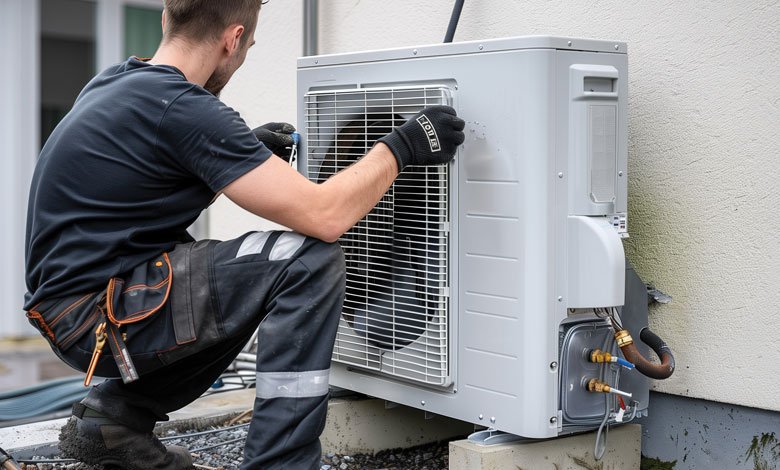CAP25: Minister O’Brien says ‘we are falling behind’

Climate Action Plan 2025 (CAP25) – the first CAP update since Darragh O’Brien became Environment Minister – makes updates on retrofit and EV charging policy but fails to adjust policy and targets on renewable energy despite the consensus in the energy sector that the State is not on track to meet its targets.
The publication of Climate Action Plan 2025 (CAP25) reaffirms the Government’s continued commitment to achieving a 51 per cent reduction in greenhouse gas (GHG) emissions by 2030 and climate neutrality by 2050, as mandated under the Climate Action and Low Carbon Development (Amendment) Act 2021.
CAP25 outlines an all-of-government approach to emissions reduction, climate resilience, and sustainable development. However, developments since the Plan’s publication raise questions regarding the viability of key delivery pathways, particularly in the energy sector.
While official documentation maintains ambitious renewable energy generation targets, including 5GW of offshore wind by 2030, there is now consensus among industry stakeholders that Ireland is not on track to meet these goals. This divergence between policy ambition and delivery capacity is not acknowledged in CAP25.
With the recent appointment of Darragh O’Brien TD as Minister for the Environment, Climate and Communications, attention has shifted to the operational aspects of climate delivery.
While CAP25 introduces several new or continued actions, particularly in the areas of residential retrofitting and electric vehicle (EV) infrastructure, the lack of progress in offshore renewable energy generation poses systemic risks to Ireland’s overall emissions reduction trajectory.
Electricity sector
The electricity sector remains central to Ireland’s decarbonisation strategy. CAP25 reports that electricity-related emissions have decreased by 26.2 per cent from 2018 to 2023, driven largely by a higher share of renewables, increased interconnection, and fossil fuel displacement. Wind generation now accounts for over one-third of electricity supply, with solar capacity also expanding significantly.
However, the sector’s medium- to long-term decarbonisation is critically dependent on the realisation of offshore wind infrastructure. Despite continued policy emphasis on the delivery of 5GW of offshore wind by 2030, and an additional 2GW for non-grid purposes, planning delays, regulatory complexity, and slow grid development have substantially inhibited progress.
CAP25 does not reflect updated delivery timelines or risk-adjusted projections for offshore capacity. Moreover, the potential over reliance on electricity to decarbonise other sectors, including transport and heating, heightens systemic exposure to underperformance in renewable energy generation. These risks have not been modelled in the current iteration of the Plan.
Further investment in grid infrastructure, planning system reform, and alignment of consenting processes are likely prerequisites to realising offshore targets. The integration of such measures in future updates will be essential for restoring sectoral credibility.
Built environment
The built environment is one of the strongest performing sectors to date. Operational emissions have decreased by 21 per cent since 2018, and the sector is currently on track to meet the first carbon budget ceiling. The retrofit programme has scaled up significantly, with over 1,000 homes per week receiving energy efficiency upgrades, supported by the Sustainable Energy Authority of Ireland (SEAI) and new finance instruments such as the Home Energy Upgrade Loan Scheme.
CAP25 outlines further actions, including:
- transposition of the Energy Performance of Buildings Directive;
- continued expansion of district heating in urban areas;
- a phased approach to the elimination of fossil fuel boilers in new builds; and
- training and capacity building via BER assessor expansion and one-stop shop development.
This sector illustrates the benefits of coordinated governance, dedicated funding (including €951 million from carbon tax revenues in Budget 2025), and regulatory alignment. However, continued performance will be conditional on supply chain resilience, ongoing capital availability, and planning streamlining.
“We are making progress, but we need to be honest about where we are falling behind, particularly in offshore wind and planning reform.”
Darragh O’Brien TD, Minister for the Environment, Climate and Communications
Transport
The transport sector presents one of the greatest challenges to emissions compliance. In 2023, emissions rose marginally by 0.3 per cent, highlighting the difficulty of reversing long-standing reliance on private car travel.
CAP25 projects that, to meet carbon budgets, transport emissions must decline by an unprecedented 12.4 per cent annually in both 2024 and 2025. Key measures in the Plan include:
- expansion of public transport capacity, which has already exceeded one million daily journeys;
- enhanced rural transport services, now recording over 100,000 weekly trips;
- rollout of EV charging infrastructure through the National EV Charging Strategy; and
- continued investment in active travel and fleet electrification.
While behavioural change and modal shift are central to transport decarbonisation, CAP25 does not propose regulatory demand-management mechanisms, such as congestion pricing, low-emission zones, or urban parking reform. Without such tools, the anticipated behavioural shift may not be realised at the necessary pace.
Agriculture
Agriculture remains Ireland’s highest-emitting sector, accounting for 34.3 per cent of total GHG emissions. CAP25 notes a 4.6 per cent reduction in 2023, attributed mainly to reduced nitrogen fertiliser application.
The Plan continues to pursue mitigation through voluntary uptake of technical measures, including:
- deployment of low-emission slurry spreading (LESS) technologies;
- use of protected urea fertilisers;
- expansion of methane reduction strategies, particularly via feed and breeding innovations; and
- development of the Biomethane Strategy, targeting 5.7TWh by 2030.
However, the Plan does not propose a structural change in herd size or land-use patterns, despite growing international pressure to address emissions through supply-side constraints.
The sector’s reliance on voluntary adoption may not yield the transformational reductions necessary to meet its legally binding sectoral ceiling. Therefore, the upcoming review of unallocated emissions savings may need to address this policy gap directly.
Land use, land use change and forestry (LULUCF)
The LULUCF sector has undergone significant recalibration due to revised modelling techniques by the Environmental Protection Agency (EPA), resulting in a 45 per cent downward revision of emissions from the sector.
Despite this, LULUCF remains a net carbon source, due in part to the age profile of Ireland’s forests and harvesting patterns. CAP25 outlines a new trajectory for the sector, including:
- a fixed reduction target of 0.626 MtCO2eq by 2030, relative to a 2016-2018 baseline;
- increased investment in peatland rehabilitation and organic soil rewetting;
- targeted afforestation, although current rates remain below the 8,000 ha/year target; and
- improvement in grassland management on mineral soils.
While CAP25 adopts a more realistic modelling baseline, delivery will require not only sustained funding but enhanced coordination between forestry licensing, afforestation incentives, and local authority planning.
Adaptation
CAP25 dedicates one of its final chapters to adaptation, noting that 2023 was the warmest and wettest year on record in Ireland. The plan builds on the publication of the State’s second National Adaptation Framework in June 2024 and sets out several priorities:
- all 31 local authorities have adopted Local Climate Action Plans;
- the National Climate Change Risk Assessment is under development and due for completion in Q1 2025;
- the TRANSLATE project, led by Met Éireann, is generating updated national climate projections; and
- sectoral adaptation planning is ongoing across 13 priority sectors, with deadlines set for Q3 2025.
Despite these developments, the EPA’s State of the Environment 2024 Report notes that implementation of adaptation measures remains fragmented and underfunded. More comprehensive cross-sectoral integration will be required to meet rising exposure to climate-related events, including floods, coastal erosion, and agricultural impacts.
Governance and delivery
CAP25 retains the governance structure established under CAP24, with the Department of the Taoiseach responsible for oversight and quarterly progress reporting. The Plan aligns with the legally binding carbon budgets for 2021-2025 and 2026-2030, and includes updated actions derived from the mid-year progress review.
However, the plan does not incorporate any scenario analysis to reflect emerging delivery risks in offshore wind, grid expansion, or planning system capacity. Nor does it recalibrate policy responses in light of underperformance in specific sectors.
The inclusion of key performance indicators (KPIs) and reduced overall number of actions are intended to improve accountability. However, further scrutiny of carbon budget overspend risks, unallocated savings, and contingency planning may be warranted in future iterations.
Public sector and finance
The public sector recorded a 2.7 per cent decrease in emissions in 2023. CAP25 updates the Public Sector Climate Action Mandate, with targets of:
- 51 per cent GHG reduction by 2030; and
- 50 per cent improvement in energy efficiency.
- Significant investment frameworks underpin the Plan, including:
- €951 million in carbon tax revenues in Budget 2025;
- €3.15 billion through the Infrastructure, Climate and Nature Fund (2026–2030);
- €663 million allocated to Ireland via the EU Social Climate Fund (2026–2032); and
- private capital mobilisation through Green Bonds and the Home Energy Upgrade Loan Scheme.
This financial architecture provides necessary support, however, success will likely require further policy direction due to the shortfall in the initial projection in overall renewable generation.
Minister O’Brien said: “We are making progress, but we need to be honest about where we are falling behind, particularly in offshore wind and planning reform. My priority is to turn ambition into action and ensure climate policy delivers for people in their homes, in their communities, and in their futures.”







